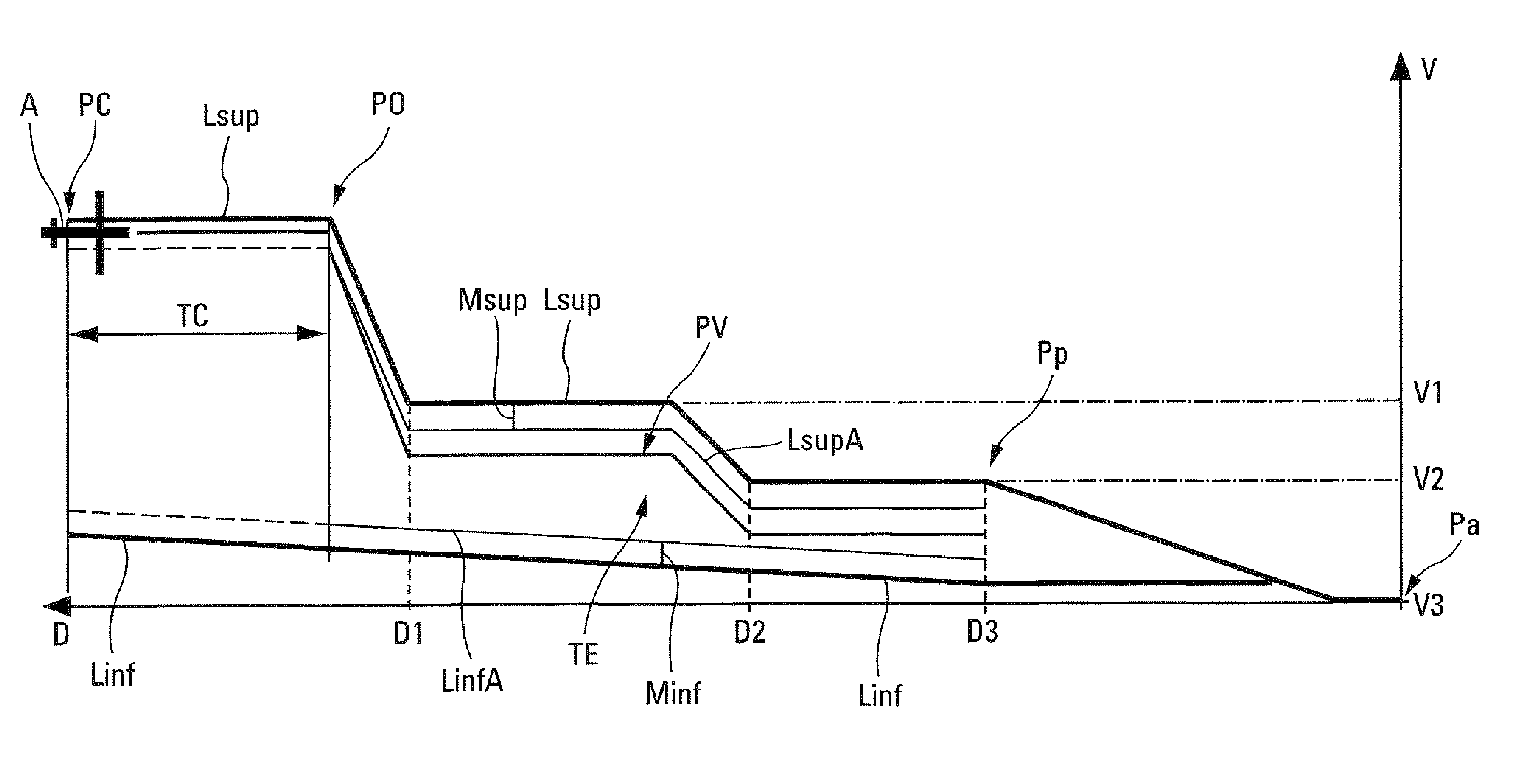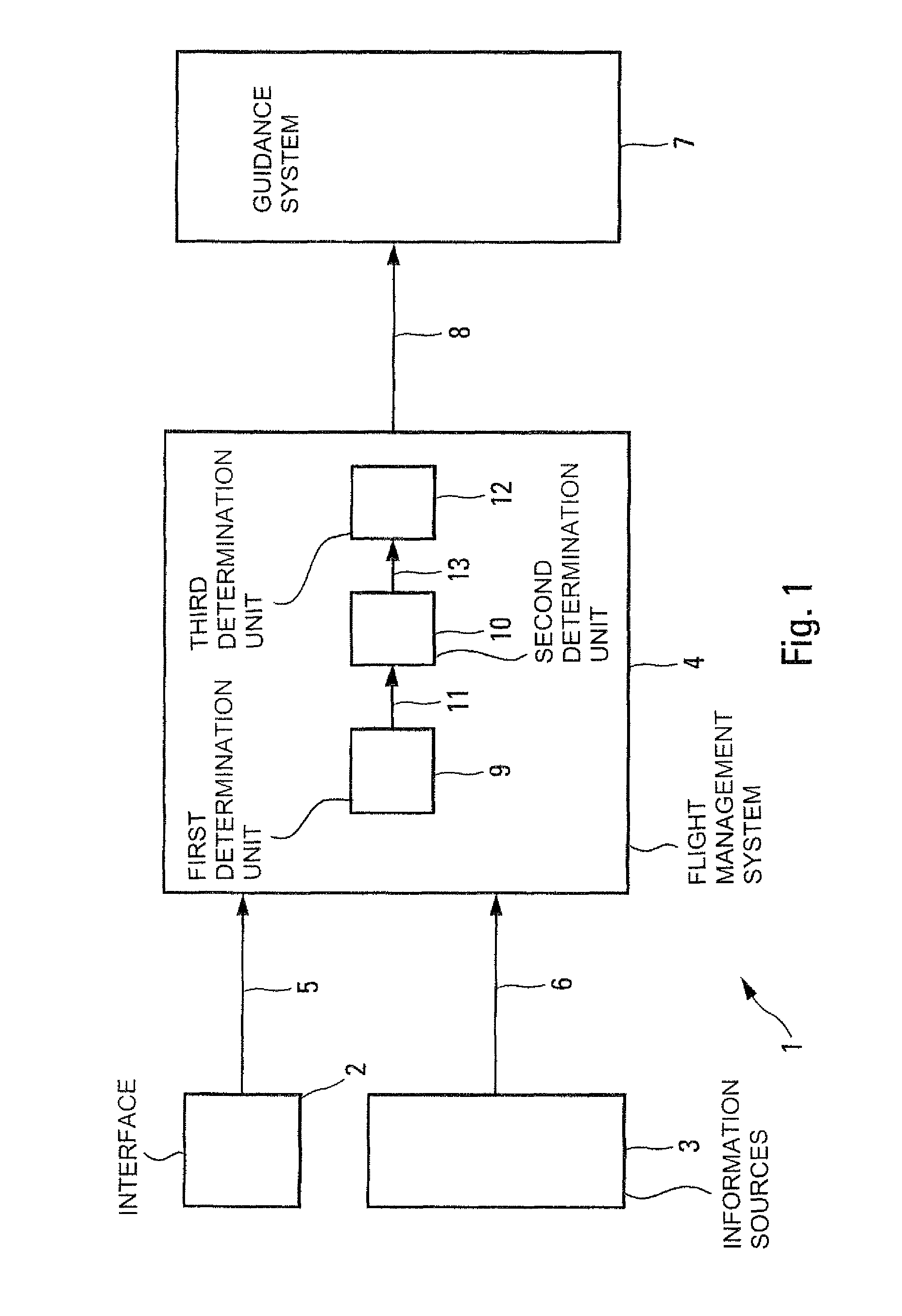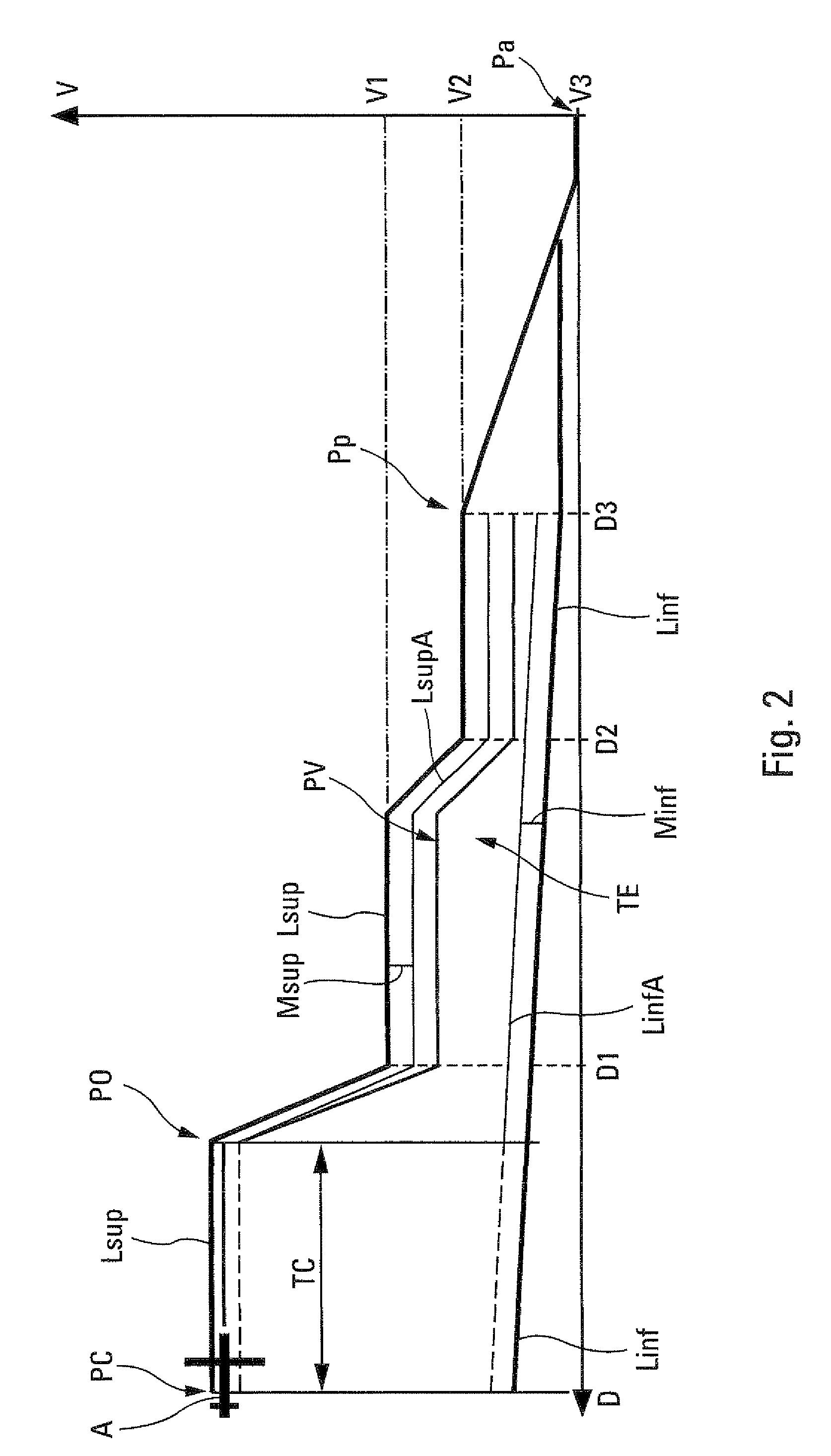Method and device for guiding an aircraft
a technology for guiding aircraft and aircraft, which is applied in the direction of vehicle position/course/altitude control, process and machine control, instruments, etc., can solve the problems of inability to fly faster, the difference between the values entered and the real values may be fairly considerable, and the flight management system does not anticipate the fact that the parameters (for example the wind, the temperature or the position of the aircraft) taken into account in the calculation of the guidance setpoints may be very unreliable, so as to achiev
- Summary
- Abstract
- Description
- Claims
- Application Information
AI Technical Summary
Benefits of technology
Problems solved by technology
Method used
Image
Examples
Embodiment Construction
[0071]Within the framework of the present invention, to comply with a time constraint, the aircraft A must arrive at a given arrival time, of RTA type (“Required Time of Arrival”), at a particular waypoint Pp of the flight trajectory TV followed.
[0072]Accordingly, said guidance device 1 comprises:[0073]interface means 2 which allow a crew member of the aircraft A to enter the values of parameters (relating to the flight of the aircraft A) into said device 1, and in particular a temperature value and / or a wind value. These interface means 2 comprise standard means such as, for example, a keyboard and / or designation means, associated with a screen;[0074]a set 3 of information sources which determine, in a standard manner, in real time, the values of flight parameters of the aircraft A, and in particular its current position PC;[0075]a flight management system 4, for example of FMS (“Flight Management System”) type, which is connected by way of links 5 and 6 respectively to said interf...
PUM
 Login to View More
Login to View More Abstract
Description
Claims
Application Information
 Login to View More
Login to View More - R&D
- Intellectual Property
- Life Sciences
- Materials
- Tech Scout
- Unparalleled Data Quality
- Higher Quality Content
- 60% Fewer Hallucinations
Browse by: Latest US Patents, China's latest patents, Technical Efficacy Thesaurus, Application Domain, Technology Topic, Popular Technical Reports.
© 2025 PatSnap. All rights reserved.Legal|Privacy policy|Modern Slavery Act Transparency Statement|Sitemap|About US| Contact US: help@patsnap.com



